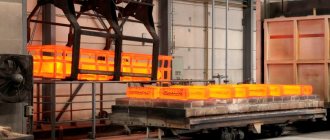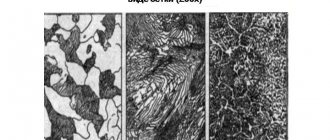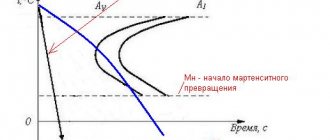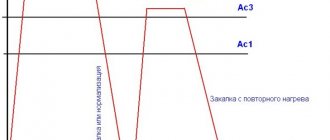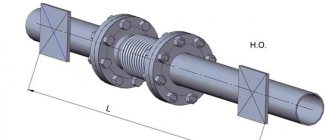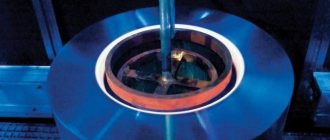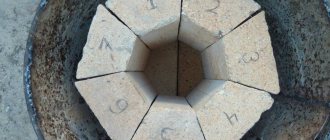In addition to preparatory activities, workflow and quality control, there are additional steps that are simply required in large-scale production. There are industries where the quality of welds plays a very important role, and every mistake can be costly. The protection of welded seams from corrosion comes to the fore. It is also necessary to protect the weld from premature destruction.
To achieve the best quality, detailed drawings are drawn up, optimal components are selected, and the work is entrusted to real professionals. But there is another effective way - processing the welded joint. There are several types of processing, in this article we will talk about thermal.
general information
Heat treatment of welded joints is a method of processing seams based on the use of high temperatures. Thanks to heat treatment, welds are protected from corrosion, the likelihood of cracks is reduced, the mechanical properties of the seam are improved, and heat resistance is increased. This method can be compared to firing clay, which acquires special properties due to high temperatures.
Only the weld seam or the area adjacent to it is subjected to heat treatment. The welded joint is heated to a certain temperature and maintained in a heated state for a certain amount of time, then cooled. For the processing process, a special installation is used for heat treatment of welds or separate devices, which we will talk about later.
There are several heat treatment methods. They all differ in the temperature used to heat the seam. The heating temperature can be from 650 to 1125 degrees Celsius, selected depending on the type of steel and the properties that the steel should receive. Parts can be heated from 1 to 5 hours. Then the metal is cooled naturally, without the use of additional methods.
As a result, the ductility and impact strength of the welded joint are improved, the mechanical properties are improved, and the residual stress from welding is reduced. Heat treatment of welded joints of process pipelines is often necessary. Because it is the pipes that form the most important components. They must be strong and durable.
High-frequency induction installation for surface hardening of large-module gears
High-frequency induction installations are used for surface hardening with an individual inductor design [3].
To harden large-diameter gears, the method of surface hardening of the tooth is used by moving the inductor in the cavity between the working surfaces of two adjacent teeth. The inductor is heated by HDTV, and then moves from the sprayer (shower) from bottom to top along the tooth of the wheel. Automation of the process and stabilization of the inductor current ensure repeatability of the quality of the hardened layer of the wheel. Installation of a gear wheel of large dimensions and mass, rotation of the wheel, its lifting, and removal are provided by a hoist.
The induction heating installation includes a Petra-0120 frequency converter and a Petra-0305 heat exchange station, a block of power capacitors and an HF output transformer with a set of inductors for cooling process water from the cooling tower.
A single-turn inductor for such an installation must have great mechanical strength, be designed for a low effective voltage (20–50 V) and provide the flow of a high high-frequency current (3–5 kA).
In Fig. Figure 1 shows a high-frequency induction installation for surface hardening of large-module gears.
Rice. 1. “Petra” HDTV induction installation for surface hardening of large-module gears
Composition of the induction HDTV installation of the “Petra” type:
- heat exchange cooling station “Petra-0395 ST”;
- thyristor converter “Petra-0120”;
- compensation unit for electrothermal capacitors;
- transformer matching block;
- inductor;
- remote control panel;
- wheel moving equipment;
- rotary table of the hardening mechanism.
In Fig. Figure 2 shows a magnetic concentrator during induction heating for high-frequency hardening of coarse-grooved gear wheels with a tooth template.
Rice. 2. Magnetic concentrator of the inductor along the tooth cavity for surface hardening of high-frequency frequencies
The loading/unloading mechanism is controlled by a programmable logic controller. All technological parameters of the heating mode are displayed on the operator panel.
Methods for heating seams
Welds and joints can be heated in several ways. Among the most common are special flexible heating products, muffle furnaces, induction and gas-flame devices.
The weld heating method is selected based on the possibility of installing additional equipment, access to pipes, part diameter and other subjective factors. Simply put, the choice of heating method is not regulated by rules and regulations. The most important thing is that heating devices must be easily mounted on the part, weigh little and provide uniform heating, without temperature changes. This processing is called local or local.
Local heat treatment using flexible heating elements is the simplest and most inexpensive way to process a seam. Previously, such heaters were produced by the Montazhspetsstroy Corporation. Such elements are easily adjusted to the diameter of the pipe and their installation does not cause difficulties.
Muffle furnaces are also used. They are quite effective when working with small diameter pipes. But there is one nuance here: in order for the heating to be uniform, you need to install the stove so that its axis of rotation does not coincide with the geometric axis.
Induction devices are also quite common. They are inexpensive and effective. Widely used when heating seams on pipes. The heating element here is multi-core copper cables, which are cooled with air. When heating the pipe seam, you need to leave a small gap between the pipe itself and the cables. This installation for heat treatment of welds allows the joints to be heated evenly and quickly. Below is a table with the characteristics of inductors.
The gas-flame heating method involves the use of multi-flame gas burners. The operating principle of such a special burner is no different from a regular household lighter, except that there are ten times more flame exit channels. Here, a flame is formed by the combustion of oxygen and combustible gas. The gas-flame method is good for hard-to-reach places, but can take longer.
Read also: Brazier from an oxygen cylinder
EMA INDUTEC GmbH, which has been in business since 1946, has developed a new process that combines the well-known advantages of induction heating and hardening with the advantages of the press hardening process. Among the advantages of induction hardening: • heating is carried out directly in the part, • no transmission losses, • energy savings, • high utilization rate, • process control is quick and easy to control, • no harmful emissions. Let's consider how they can be supplemented.
High precision requirements for parts
Deformation during hardening When heated to approximately 900–950°C, adverse effects appear such as:
- various thermal expansions caused by differences in mass and shape,
- warping as a consequence of the asymmetrical shape,
- warping as a result of asymmetrical hardening structures,
- expansion due to the larger volume of martensitic structure (about 1%),
- and, most often, a combination of the above factors;
- and finally, we must not forget:
- stresses in the part that arose during processing and manufacturing before the hardening process.
All pre-existing internal stresses are released during the heating and hardening process, especially in thin-walled parts. In order to eliminate the inevitable influences, time-intensive and, as a result, expensive modifications are necessary. An additional complication is the fact that all improvement operations (such as grinding and straightening) have to be performed on a hardened surface.
Induction hardening in a non-tempered state (Fixturhärten)
Induction hardening process on a mandrel To eliminate all these seemingly inevitable undesirable effects and to meet current requirements, EMA Indutec GmbH has already supplied a large number of induction hardening plants, the vast majority of which are designed for annular and cylindrical parts, such as sliding couplings. A process variant already available on the market for a part after carburization is shown in Fig. 1, table. 1 .
Rice.
1. Inductive hardening on a mandrel Table 1. Typical process parameters
| Sliding sleeve (16MnCrS5) Quenched and tempered, mandrel hardening included | |
| Power | 100 kW |
| Frequency | 10 (or 20) kHz |
| Cycle time | 60 s (incl. loading) |
| Surface hardness | 650 … 720 HV1 |
| Hardening depth | 0.3…0.6 mm |
| Core hardness | 320 … 420 HV1 |
| Accuracy: | |
| Roundness tolerance | <0.05 mm |
| Parallelism | <0.05 mm |
| Taper / Squareness | <0.05 mm |
The oval or non-circular sliding sleeve is mounted on a non-conductive centering and holding device (step 1) and inductively heated to a hardening temperature of approx. 900°C (step 2). Once the temperature is reached, a short holding period follows to ensure uniform and homogeneous temperature distribution throughout the part. A calibrating mandrel is then inserted into the part (step 3), followed by immediate quenching by applying a large amount of polyamide-based coolant (step 4). Steps 1 to 4 are the process of induction hardening the workpiece with a hot fit onto a high alloy steel mandrel. Next comes the tempering process: the inductor is repositioned around the sliding sleeve and calibrating mandrel (step 5), and the power is turned on. The applied power serves primarily to generate the required tempering heat in the still pressed part (step 6). As the temperature increases, minimal thermal expansion of the sliding sleeve occurs. Already at a temperature of about 200°C, a minimum gap is formed (step 7), which allows you to remove the sliding sleeve from the calibrating mandrel without any noticeable application of force - the spring force is more than enough. The precision and high-precision surface of the calibration mandrel thus does not show any signs of abrasion or scratches (step 8), which, of course, significantly increases its service life. At the end of the entire hardening and tempering process, the sliding sleeve can be cooled back to room temperature.
New induction press hardening process The new process has been developed for, but is not limited to, disc gears. All parts requiring smooth and flat surfaces ( Fig. 2 ) can thus be brought to their final dimensions with a high degree of precision during the hardening process. In principle, the new installation works in the same way as the conventional one (see above). However, additionally at the bottom there is one stationary device for fixing the part (lower stamp) and an upper stamp, which is pressed against the hot part and presses with a certain force during the hardening process.
Rice. 2. Irregular disc wheel Steps 3 and 4 of Figure 3 require additional workpiece fixing devices (marked in green).
Rice. 3. Induction hardening in a captive state of a disc (gear) wheel
After hardening (step 4), the dies are no longer needed, and they are removed - the induction tempering process is carried out using the same inductor and power source as before during the hardening process (steps 5 and 6). The process parameters and the results obtained are presented in Table 2 .
Table 2. Disc Wheel Process Parameters
| Disc wheel (16MnCrS5) Hardened and tempered | |
| Power | 250 kW |
| Frequency | 10 kHz |
| Cycle time | 4 min |
| Surface hardness | 680…780 HV30 |
| Hardening depth | 0.8…1.2 mm |
| Core hardness | 350…480 HV30 |
| Accuracy: | |
| Roundness tolerance | <0.03 mm |
| Parallelism | <0.03 mm |
| Taper / Squareness | <0.05 mm |
Advantages of the installation When compared with the traditional free-hardening method, the new installation is characterized by two important and exceptional criteria. 1. In most conventional methods, parts are gas heated in a rotary hearth furnace, then carburized, and finally transferred to a press while hot. During transportation, parts are cooled to a greater or lesser extent. As is known, the time interval between the end of the heating phase and the first hardening is extremely important for the quality of the resulting parts, and in the new method it is significantly reduced. Under certain conditions, an inductor in a new installation makes it possible to compensate for transfer losses and compensate for the decrease in temperature. 2. The hardening technique has also been changed. EMA Indutec GmbH uses four independently adjustable quenching circuits: via the outlet holes of the lower die, via the upper die, via a calibrating mandrel and additionally with traditional shower quenching cooling from the outside ( Fig. 4 ). These four hardening options provide the greatest possible flexibility and allow you to adjust the shape only by separately adjusting the operation of the shower nozzles. Of course, both the consumption rates and the holding time are also individually programmed. All shower nozzles are controlled by flow meters.
Rice. 4. Four individually controlled nozzle systems
Advantages of the technology Through the above-described plant and process, EMA INDUTEC GmbH combines the advantages of induction hardening with the advantages of captive hardening:
- the process can be integrated directly into the line,
- continuous flow in production (One-piece flow),
- no delay at the start of the process - no heating delay,
- energy savings due to short heating times,
- excellent reproducibility due to good regulation,
- the part size is even closer to the final dimensions,
- minimizing defects,
- minimizing rework processes.
The process is based on working with parts after carburization. Thus, there is no need to change the material (for example, to a temperable steel with a sufficient carbon content) - the permissible hardening parameters do not need to be changed. That is, the customization process is less expensive financially and in time compared to completely new technology and parts that are made from a different material.
Ring oven concept
Installation according to state of the art Fig. 5 shows a diagram of a traditional installation. The main components are a rotary hearth furnace for carburizing and a conventional hardening press for preheated parts. Since the traditional installation uses oil as a quenching medium, a washing machine must be included in the line for subsequent cleaning of the parts. Then a separate tempering oven. All installation components are connected by a transport system.
Rice. 5. Traditional installation
Induction industrial installation - layout diagram It is already obvious at first glance that the number of individual components of the installation ( Fig. 6 ) has been noticeably reduced. All that remains is a rotary hearth furnace and a new induction installation for freezing hardening followed by tempering. A washer is no longer necessary because induction hardening typically works with a water-based hardening medium so that there is no need to clean the parts after heat treatment. In addition, a free-standing tempering oven can be omitted. The release is integrated into the new process, as a result, no additional energy is required. The inductor allows both heating for hardening and tempering without any readjustment - only the power input differs.
Rice. 6. Induction industrial installation
Rice. 7. Hardening plant
As a result, the number of plant components is reduced, as well as the number of transmission systems and, as a result, the sources of failure and the required maintenance are significantly reduced. The heart of the new process, a module consisting of an inductor, upper and lower workpiece fixation, and a calibration mandrel, can be integrated into (almost) every standard installation of EMA Indutec GmbH ( Fig. 7 ). Application The process is suitable for the following parts:
- sliding couplings,
- turning circles,
- synchronizing rings,
- disc wheels,
- clutch housings,
- any type of high-precision cylindrical parts.
conclusions
A completely new process is introduced that combines both the advantages of induction heating and induction hardening with the advantages of free-state hardening to produce high-precision parts with significantly reduced or completely eliminated downstream machining processes. The main component is a hardening machine equipped with a built-in free-state hardening device in coordination with induction heating. Inductive energy can be used to heat the part before quenching in the press, as well as for heating before tempering, which ensures easy removal/removal of the calibrating mandrel without any wear or damage to the surface. Complete installation alone or in a production line requires neither a washing machine nor a separate tempering furnace.
Wilfried Goy, Mikhail Garkusha EMA-Indutec GmbH, Germany Petersbergstr. 9, D-65451 Meckesheim Tel.: +49-6226-788-0 Fax: +49-6226-788-100 E-mail www.ema-indutec.com
References 1. Heess K. et al., Maß-und Formänderungen infolge Wärmebehandlung, Expert Verlag, Renningen 2007. 2. Benkowsky G., Induktionserwärmung, Verlag Technik GmbH, Berlin 1990. 3. Schreiner, A.; Irretier, O., Praxishandbuch Härtereitechnik, Vulkan-Verlag, Essen 2013. 4. Nacke, B.; Baake, E., Induktives Erwärmen, Vulkan-Verlag, Essen 2014.
Heat treatment technology
When carrying out heat treatment, the length of the seam is taken into account, uniform heating of the joint and adjacent areas is maintained, a suitable heating speed and temperature is selected, the heating duration time is set (also called dwell time) and the cooling rate is set.
Heat treatment of pipeline welds begins with the seam being insulated using heat-insulating material. For example, when using a gas-flame burner, the seam is wrapped with a layer of sheet asbestos 2-3 centimeters thick. Only then does the installation of the burner itself take place. The same principle applies when welding with induction devices or heating elements.
To ensure that welds do not lose heat, insulating materials must be strong and heat-resistant at the same time. At the same time, they should be light in weight and bend easily. The table below describes the main thermal insulation materials used in heat treatment. The temperature range is also indicated.
Processing of the weld seam is entrusted only to specialists. The specialist undergoes preliminary training and only after that begins work. In this case, the process should be led by a senior master. The specialist must not only select and install the heating equipment correctly, but also check how well the mechanics have prepared the metal. Heat treatment of pipeline welds will not begin without careful preparation.
After treatment, thermal rest can be carried out. Let the part cool down. Then the welds are ground with a grinder. Cleaning the weld after welding is necessary to remove unnecessary inclusions formed during welding. For example, slag.
Induction heating of metal
Induction heating of metal combines frequency, temperature, speed and control of the production process. The principle behind induction heating is Faraday's law. a metal part is placed in an inductor, an eddy current arises inside it, which tends to the outer walls.
That is, heat arises directly in the object (metal workpiece), leaving everything around cold, which is an undoubted advantage of this heating method. The heating depth depends on the frequency of the induction heater, and the metal part can be located in isolation from the power source.
Heat in a metal workpiece is not generated uniformly over the entire cross-section, but decreases exponentially with distance from the surface due to the weakening influence of the magnetic field. This process is characterized by a special physical quantity - the depth of penetration of the magnetic field (essentially, the thickness of the surface layer of an object in which the external magnetic field drops to zero). This value depends on the frequency of the inductor current and on the resistivity and relative permeability of the workpiece material at the operating temperature.
Midrange
High frequency
Induction furnaces
Links[edit]
Notes[edit]
- ^ a b Rudnev et al. 2002, p. 39
- ^ a b Rudnev et al. 2002, p. 58
- Rudnev et al. 2002, p. 59
- ^ a b Rudnev et al. 2002, p. 1
- Rudnev et al. 2002, p. 2
- Rudnev et al. 2002, p. 249
- Rudnev et al. 2002, p. 250
Bibliography[edit]
- Davis, John; Simpson, Peter (1979), Handbook of Induction Heating, McGraw-Hill, ISBN 0-07-084515-8.
- Rapoport, Edgar; Pleshivtseva, Yulia (2006), Optimal control of induction heating processes, CRC Press, ISBN 0-8493-3754-2.
- Rudnev, Valery; Unloved, Don; Cook, Raymond; Black, Micah (2002), Handbook of Induction Heating, CRC Press, ISBN 0-8247-0848-2.
Application of induction heating
The diverse application of induction heating is due to its properties and functions that facilitate the technological process, allowing it to be automated as much as possible and improve the quality of work results. Practical application of heating:
- molding, melting of ferrous and non-ferrous metals;
- hardening;
- soldering;
- hot pressing;
- welding;
- vacuum melting;
- maintaining the temperature of molten glass;
- processing of very small parts, including jewelry;
- bending pipes and other parts;
- sterilization of laboratory instruments.
Advantages and disadvantages
Hardening of parts using HDTV has both advantages and disadvantages. The advantages include the following:
- After high-frequency quenching, the part retains a soft center, which significantly increases its resistance to plastic deformation.
- The cost-effectiveness of the process of hardening HDTV parts is due to the fact that only the surface or zone that needs to be hardened is heated, and not the entire part.
- During mass production of parts, it is necessary to set up the process and then it will be automatically repeated, ensuring the required quality of hardening.
- The ability to accurately calculate and adjust the depth of the hardened layer.
- The continuous-sequential hardening method allows the use of low-power equipment.
- A short heating and holding time at high temperature contributes to the absence of oxidation, decarburization of the top layer and the formation of scale on the surface of the part.
- Rapid heating and cooling does not result in large warpage and distortion, which allows for a reduction in finishing allowance.
But it is economically feasible to use induction installations only for mass production, and for single production, purchasing or manufacturing an inductor is unprofitable. For some parts with complex shapes, induction production is very difficult or impossible to obtain a uniform hardened layer. In such cases, other types of surface hardening are used, for example, gas-flame or volumetric hardening.
Heating inductor HDTV
(Latin inductor, from induce - I introduce, find, encourage) an electromagnetic device designed for induction heating of HDTV. The HDTV inductor consists of two main parts - an inductive wire, with the help of which an alternating magnetic field is created, and current leads for connecting the inductive wire to a source of electrical energy. A body conducting electric current, placed in a magnetic alternating field, heats up due to the thermal effect of eddy currents induced in areas of the product directly covered by the inductive wire. Basically, all types of HDTV inductors can be divided into two types: simultaneous and continuous-sequential heating. In the first case, the area of the inductive wire is approximately equal to the area of the heated surface, which makes it possible to simultaneously heat all its sections. In the second method, the heated product is moved relative to the induction wire, sequentially heating sections of the surface of the product.
